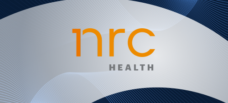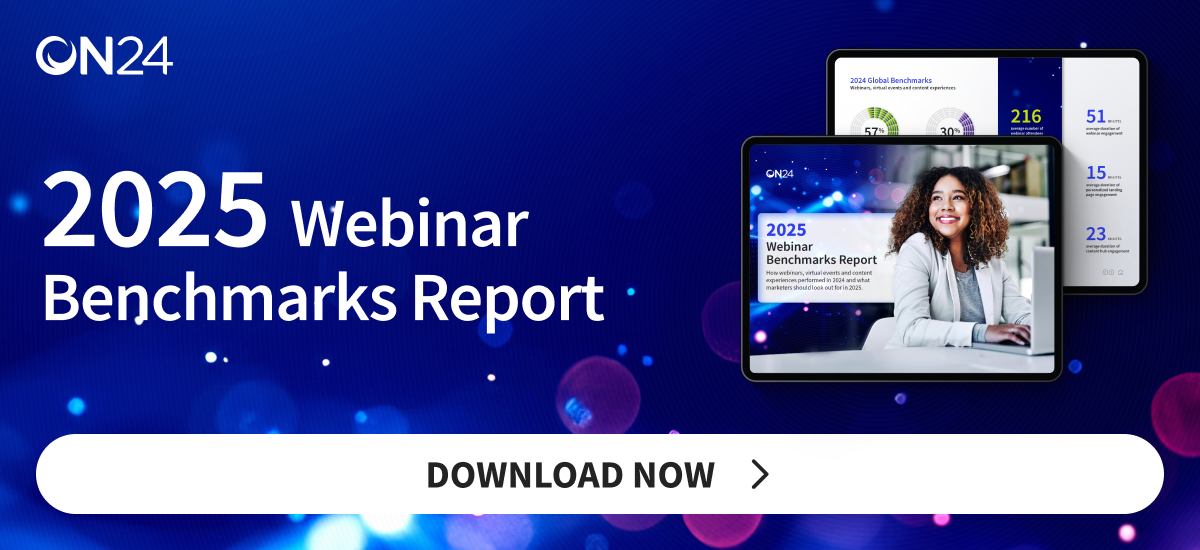Overview
-
Mid-week late mornings or early afternoons perform best
Data shows Tuesday–Thursday at around 11 AM or 2 PM local time consistently deliver higher registration and attendance.
-
Know your audience and account for time zones.
Analyze past performance, regional patterns, and industry behaviors to choose the most effective day and time — and use multiple sessions or on-demand to reach global attendees.
-
Timing works best with strong promotion and optimization.
Begin outreach 2–3 weeks in advance, avoid holidays and competing events, and continually refine your schedule using engagement data and analytics.
When it comes to hosting webinars, timing can make or break your success. You could have the most engaging speakers, slides and topic, yet still miss your attendance goals if your launch is poorly timed.
Choosing the best time for webinars is one of the most powerful ways to increase attendance and engagement. But when exactly should you host your webinar? What day of the week draws the biggest crowds? And how can you adapt your schedule for audiences across multiple time zones?
Let’s explore what the data says, why timing matters, and how you can use these insights to maximize your webinar results.
Why Timing Matters for Webinars

The best webinars aren’t built on great content alone – they’re scheduled with intention. Timing affects every metric marketers track: open rates, registration numbers, attendance, and engagement.
People are busy. Their inboxes are full. The right timing ensures your event appears when they’re most likely to register and show up.
ON24’s Digital Engagement Benchmarks reveal that audience behavior has evolved since virtual events began to gain traction. Attendees now plan further in advance and expect webinar experiences that fit neatly into their workday. That means your promotion cycles need to be longer, and your event timing needs to match the rhythms of your audience.
What the Data Says: Best Day of the Week to Host a Webinar

Mid-Week is the Sweet Spot
Across nearly every industry benchmark, Tuesday, Wednesday, and Thursday emerge as the best days for webinars. Data from sources such as LiveWebinar, eWebinar, and Sequel.io shows that these days consistently deliver the highest registration and attendance rates.
It’s easy to see why. Early in the week, people are catching up on tasks. Later in the week, they’re preparing for the weekend. Mid-week sits right in that productivity pocket where professionals are focused and available to engage.
Why Mondays, Fridays, and Weekends Are Riskier
Mondays tend to be overloaded with meetings and catch-up tasks, while Fridays are often reserved for wrapping up work. Weekends? They belong to personal time.
Unless your target audience is consumer-facing or operates outside the 9-to-5 world, avoid these slots for live events.
How to Choose the Right Day for Your Audience
While mid-week is generally best, your specific audience might behave differently. Review your webinar analytics, CRM data, and engagement insights. Check when your registrants are most active.
If your attendees span multiple regions, consider offering two sessions on different days or leveraging ON24’s on-demand capabilities so audiences can engage when it suits them best.
Best Time of Day to Host a Webinar

Late Morning and Early Afternoon Win
Data shows that late morning or early afternoon—typically 11 AM or 2 PM local time—is the best time to host a webinar. These time slots strike the balance between focus and availability.
By late morning, attendees have cleared their initial emails and are ready to focus. By early afternoon, they’re still engaged before the post-lunch slowdown hits.
Accounting for Time Zones
If your audience spans time zones, identify where the majority of your registrants are located and plan around that region. For global audiences, consider running the same webinar at multiple times or making the session available on demand shortly after it airs.
For instance, if most of your attendees are in North America but you have a growing European audience, you could host a live session at 11 AM ET and offer an on-demand version for EMEA the next morning.
When Other Times Make Sense
There’s no one-size-fits-all approach. For audiences in education, hospitality, or B2C industries, evenings might perform better. For technical teams or global companies, early morning or late-day sessions could make sense.
Don’t treat your audience as a monolith; experimentation is key. Use A/B testing to compare engagement across time slots and let the data guide you.
How to Schedule Your Webinar for Success

Once you know the best days and times, apply these steps to fine-tune your scheduling strategy.
Step 1: Review Your Audience and Past Performance
Look at your previous webinars. When did you see the highest registration and attendance rates? Did certain time zones or industries perform better? Use your ON24 analytics and CRM data to find patterns.
Step 2: Choose Your Target Day and Time
Start with a proven slot like Wednesday at 11 AM local time. Then adapt based on your data. Keep your calendar clear of holidays or competing events; clashing with busy dates is setting yourself up to fail.
Step 3: Promote Early and Often
Timing your webinar is only half the battle. The other half is promoting it. Begin your promotional emails two to three weeks in advance. Send reminders one week before, one day before, and again 15 minutes before the event starts.
Step 4: Monitor Results and Optimize
After each webinar, review your attendance data, engagement scores, and feedback. Which sessions drew the most registrants? What times generated higher viewing duration?
Use these insights to adjust future scheduling. Over time, your data will reveal your unique attendance “sweet spot.”
Step 5: Leverage On-Demand Access
Not everyone can attend live. That’s why on-demand webinars are a marketer’s secret weapon. With ON24, you can instantly repurpose your live event for on-demand viewing, giving audiences the flexibility to join on their own schedule while you continue capturing leads.
Additional Factors That Influence Webinar Timing

Even with the best timing data, context matters. Consider these external factors:
-
- Holidays and seasonal trends: Avoid scheduling near long weekends, major holidays, or industry conferences.
- Audience industry: Executives and educators have very different daily schedules. Align your timing with their working patterns.
- Webinar format: Short, interactive sessions might thrive mid-day, while deep-dive or certification webinars could benefit from later starts, when your audience will have more free time to digest the information afterwards.
- Event competition: Scan your industry calendar to ensure you’re not overlapping with major launches or events.
- Holidays and seasonal trends: Avoid scheduling near long weekends, major holidays, or industry conferences.
Final Thoughts

Timing is both an art and a science. The best day and time to host a webinar will depend on your audience, your content, and your goals. Start with proven best practices: mid-week, late morning or early afternoon, and then use your ON24 analytics to refine from there.
Remember, great webinars aren’t just about showing up at the right time. They’re about creating an experience that keeps audiences engaged throughout the event cycle.
Ready to plan your next webinar? Explore how the ON24 platform can help you schedule, deliver, and optimize every webinar for maximum engagement and measurable results.





